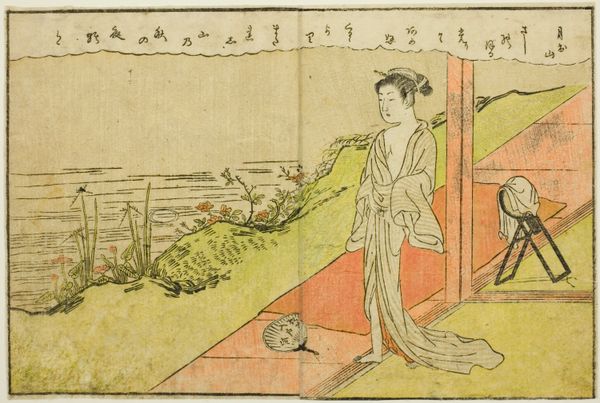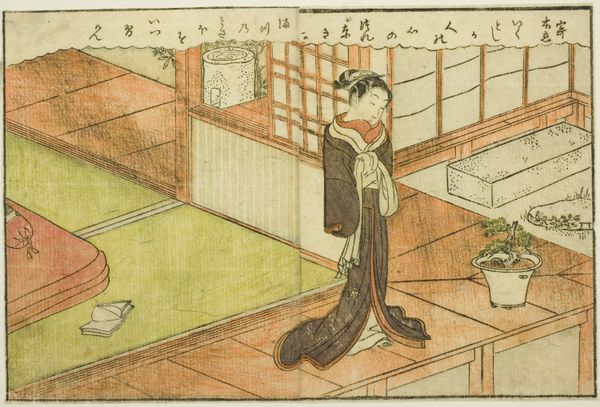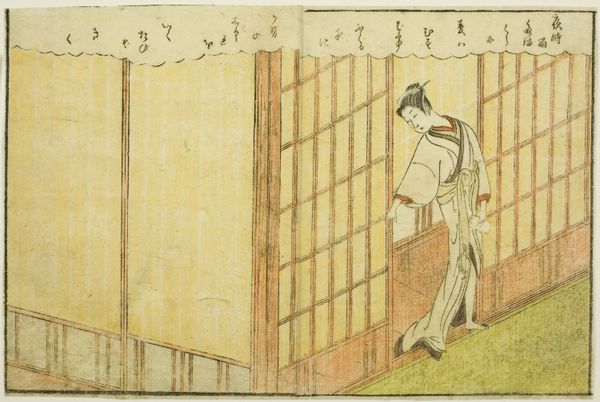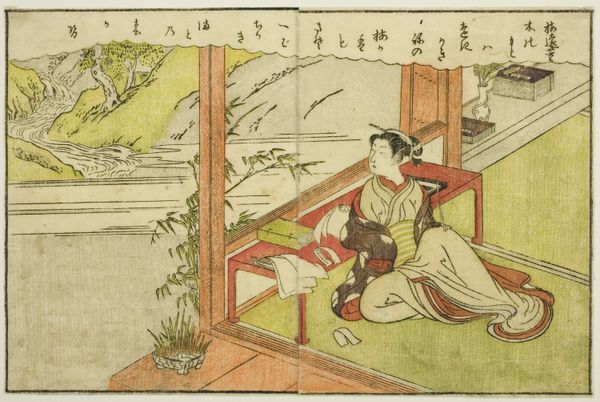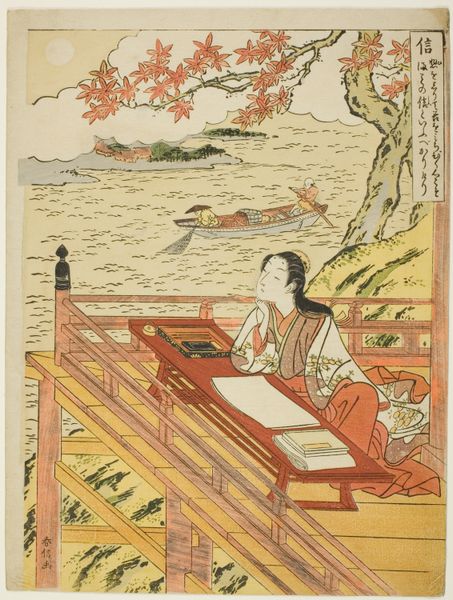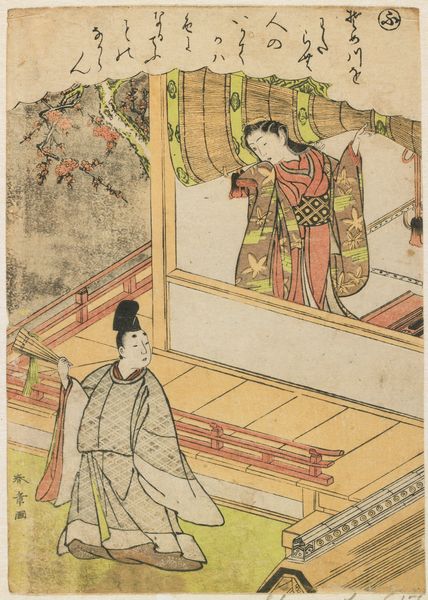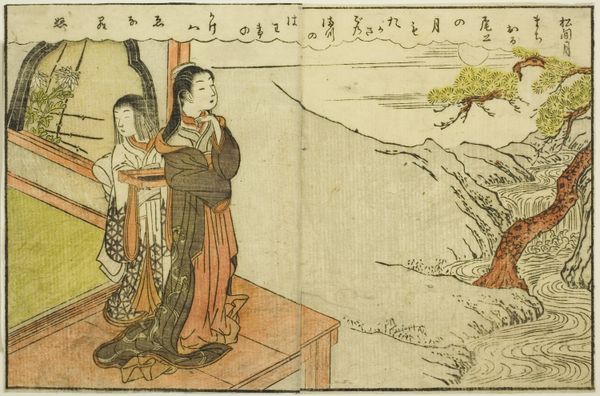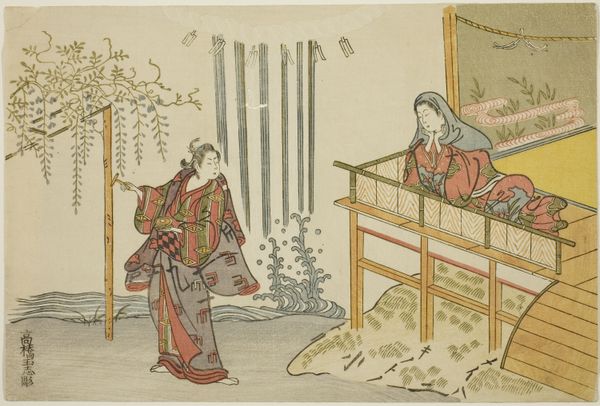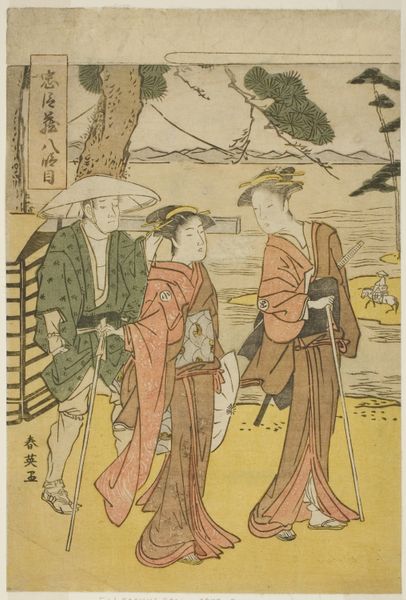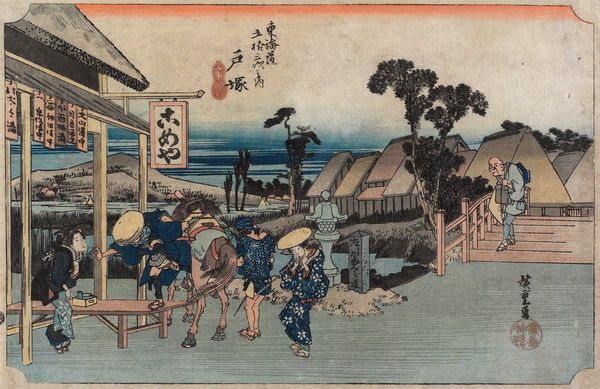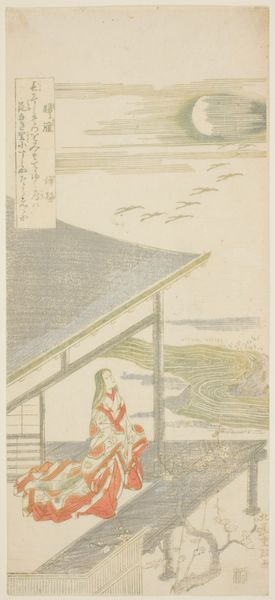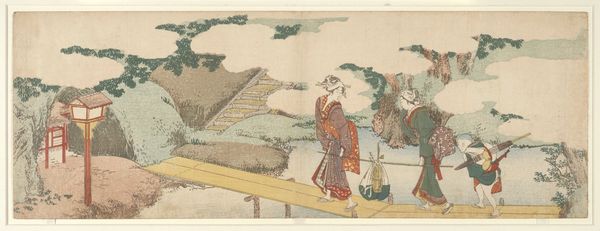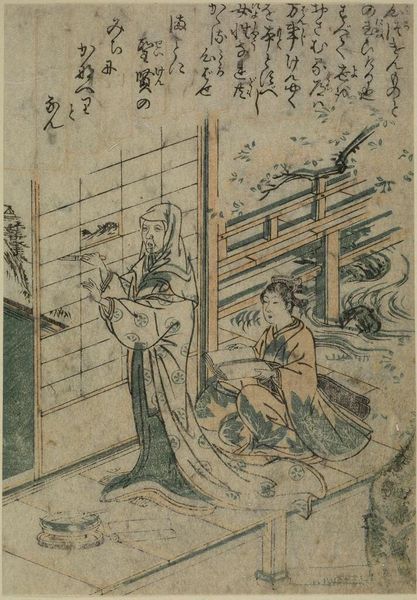
Double-page Illustration from Vol. 2 of "Picture Book of Spring Brocades (Ehon haru no nishiki)" 1771
0:00
0:00
print, plein-air, woodblock-print
#
narrative-art
# print
#
plein-air
#
asian-art
#
landscape
#
ukiyo-e
#
japan
#
figuration
#
personal sketchbook
#
woodblock-print
#
watercolour illustration
#
genre-painting
Dimensions: 17.9 × 26.9 cm (7 1/16 × 10 9/16 in.)
Copyright: Public Domain
Curator: This is a double-page woodblock print, created around 1771 by Suzuki Harunobu. It’s from the second volume of "Picture Book of Spring Brocades". Editor: There’s a quiet melancholy in it, I think. A figure gazes out at the sea, with calligraphy swirling across the top almost like another form of nature. Curator: Harunobu was a pivotal figure in the development of full-color ukiyo-e prints, often depicting scenes of everyday life with a focus on women, examining their roles within a shifting social landscape. The print has a close affinity with plein-air art. The scene shows an elegantly dressed woman overlooking the seaside from what appears to be a veranda. What are your thoughts about its material execution? Editor: Well, I find it interesting how the woodblock technique lends itself to this layered visual space. The way the water and sky bleed together implies an understanding of printmaking. Also notice how there are multiple ships that appear nearly parallel—they remind me of factories. I think the process used to make those prints also had an interesting parallel with production systems of that era. Curator: Absolutely. And consider the woman's posture. Is it one of longing, perhaps, or simply quiet observation? Gender obviously shapes our interpretations, with the female figure central. Editor: It's intriguing, how she occupies this liminal space, neither fully indoors nor outdoors, reflecting a woman on the edge of social acceptance—maybe that connects back to Harunobu's engagement with societal transitions. The way light floods the background could suggest some change. Curator: Indeed, and those small details matter profoundly. Harunobu's attention to texture and pattern enriches the visual experience and adds to our deeper understanding of 18th-century Japan, its artistry, and the complex negotiations of class and gender. Editor: It makes you reflect on labor: the artisan's labor and its echoes across time, resonating with how materials continue to frame our narratives. A really interesting picture. Curator: Thank you, I think situating this in the nexus of gender and social identity, helps us appreciate its subtle revolutionary character.
Comments
No comments
Be the first to comment and join the conversation on the ultimate creative platform.
